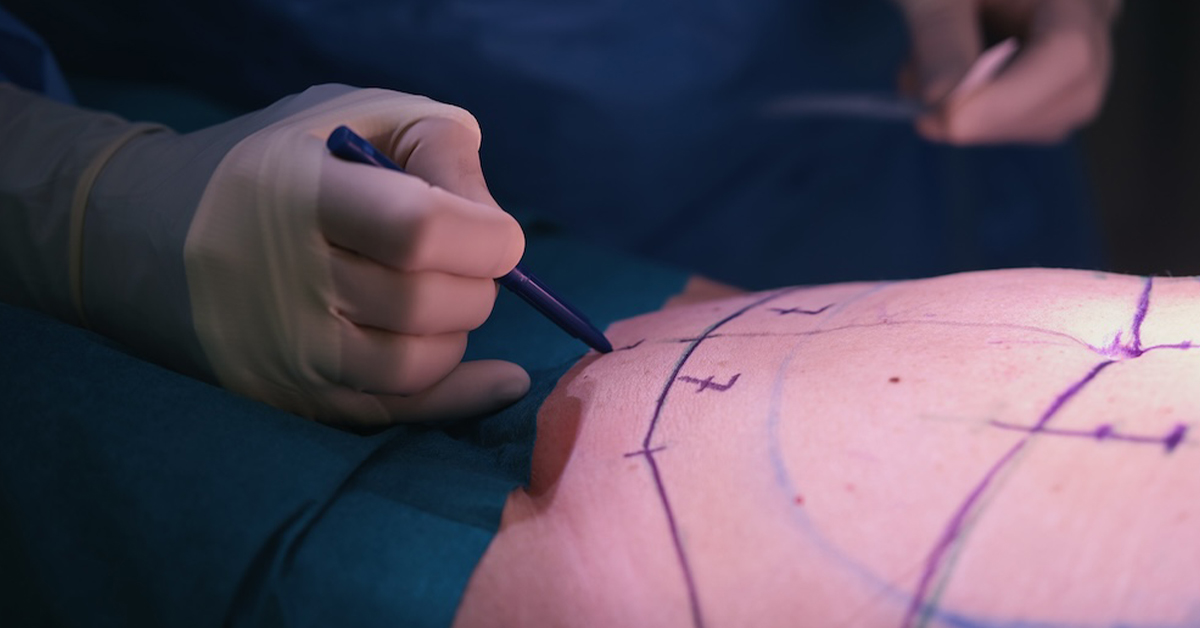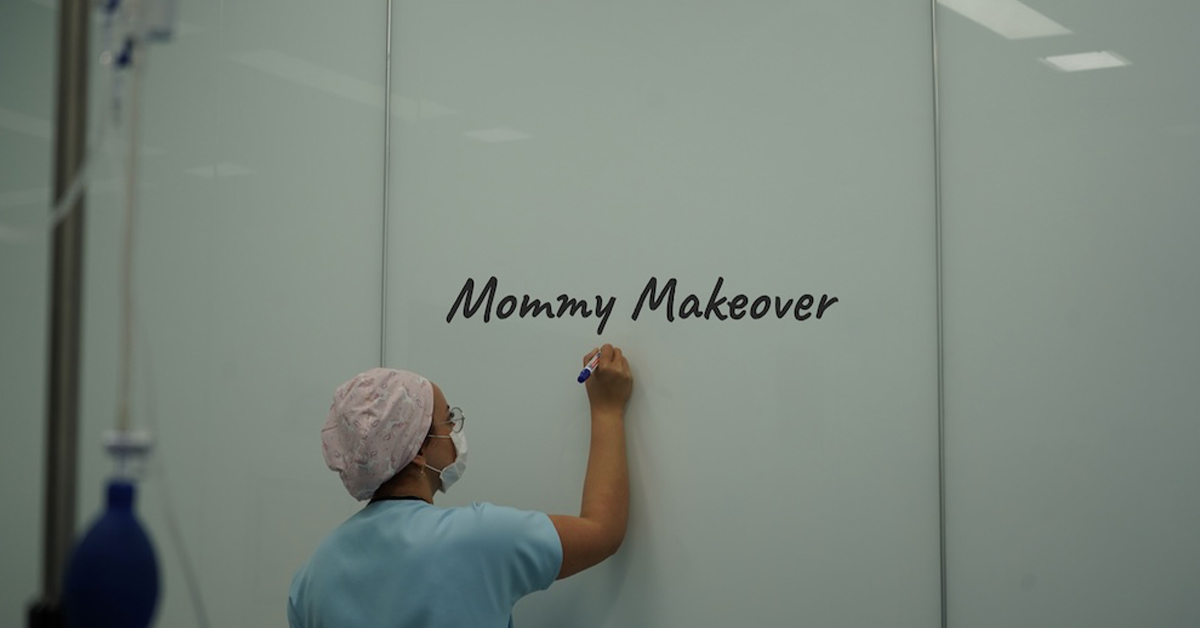Understanding Seroma After Brazilian Butt Lift: Causes & Treatment
Seroma after Brazilian butt lift is a common complication that can occur during the recovery process. It refers to the buildup of clear-yellow fluid under the skin near the surgical site. The exact cause of seroma formation is not fully understood, but it is believed to be a result of tissue disruption and damage to the lymphatic vessels and blood vessels during the surgery.
While most seromas resolve on their own, larger or symptomatic seromas may require medical intervention. Treatment options include needle aspirations, sclerotherapy, seroma catheter placement, and surgical excision. Postoperative care instructions, such as limiting physical activity and wearing compression garments, can also help promote seroma healing and prevent recurrence.
What is a Seroma and Why Does It Occur?
A seroma is a common complication that can occur after a Brazilian butt lift surgery. It refers to a fluid collection that forms under the skin near the surgical site. During the surgery, a surgical cavity is created to remove excess fat and tighten the underlying muscles. This cavity can fill with fluid, resulting in the formation of a seroma. The fluid in a seroma is typically clear or yellowish and consists of a combination of blood plasma, lymphatic fluid, and tissue fluid.
The exact cause of seroma formation is not fully understood, but it is believed to be a result of tissue disruption and damage to the lymphatic vessels and blood vessels during the surgery. The disruption of these vessels can lead to a leakage of fluid into the surgical cavity, resulting in the formation of a seroma. The extent of tissue disruption and the surgical technique used can influence the likelihood of developing a seroma.
It is important to note that not all patients who undergo a Brazilian butt lift surgery will develop a seroma. The risk factors for seroma formation include undergoing extensive surgery, having a higher body mass index, or having a family history of seromas. Factors such as low protein intake and poor wound healing can also contribute to seroma development.
“A seroma is a fluid collection that forms under the skin near the surgical site following a Brazilian butt lift surgery. It occurs when fluid accumulates in the surgical cavity, which is created during the surgery to remove excess fat and tighten the underlying muscles.”
What is a Seroma and Why Does It Occur?
| Risk Factors | Causes |
|---|---|
| Undergoing extensive surgery | Tissue disruption and damage to lymphatic vessels and blood vessels |
| Higher body mass index | Leakage of fluid into the surgical cavity |
| Family history of seromas | Extent of tissue disruption and surgical technique |
| Low protein intake | |
| Poor wound healing |
Risk Factors and Causes of Seroma After Brazilian Butt Lift Surgery
Developing a seroma after BBL can be influenced by several risk factors. One significant factor is undergoing extensive surgery, which involves more tissue manipulation and increases the chances of fluid accumulation. Obesity is another risk factor, as individuals with higher body mass index (BMI) may have a higher predisposition to seroma formation due to increased tissue disruption during the procedure. Low protein intake can also contribute to poor wound healing and increase the likelihood of developing a seroma.
In addition to these factors, certain surgical techniques can influence the risk of seroma formation. Inadequate closure of the surgical incision can also lead to seroma development as it may create spaces for fluid to accumulate.
It is important to note that seroma development is multifactorial, and individual variations can play a role. Factors like family history, overall health, and personalized healing responses may also impact seroma formation. Therefore, it is crucial for both patients and healthcare providers to be aware of these risk factors and take appropriate measures to minimize the chances of seroma occurrence.
| Risk Factors | Causes |
|---|---|
| Extensive surgery | Tissue manipulation and disruption |
| Obesity | Increased tissue disruption and impaired healing |
| Low protein intake | Poor wound healing |
| Tissue undermining techniques | Disruption of lymphatic vessels |
| Inadequate closure of incision | Spaces for fluid accumulation |
Recognizing the Symptoms of Seroma After Brazilian Butt Lift Surgery
It is important to be able to recognize the symptoms of seroma after Brazilian butt lift surgery in order to seek appropriate medical care. By being aware of these symptoms, you can ensure timely intervention and prevent potential complications. Some common symptoms of seroma include:
- Abdominal swelling: Seromas can cause a balloon-like swelling in the abdominal area. This swelling can be uncomfortable and may affect your mobility.
- Fluid drainage: Clear or yellowish fluid may drain from the surgical incision site. This drainage may be continuous or intermittent.
- Discomfort or pain: You may experience discomfort or pain near the incision site. This can vary in intensity and may worsen with movement or pressure.
If you notice any of these symptoms within the first few weeks after your Brazilian butt lift surgery, it is important to consult a healthcare provider for an accurate diagnosis and appropriate treatment. They will be able to assess your condition and advise you on the best course of action.
“Timely recognition of seroma symptoms can significantly impact your recovery. Don’t hesitate to reach out to your healthcare provider if you experience any concerning symptoms.”
Remember that everyone’s body responds differently to surgery, and while seromas are a common complication, not everyone will develop them. However, being vigilant about any changes or symptoms can help ensure a smooth recovery process and minimize any potential complications.
| Symptoms | Significance |
|---|---|
| Abdominal Swelling | Indicates fluid accumulation and potential seroma formation. |
| Fluid Drainage | Suggests an active seroma that may require medical attention. |
| Discomfort or Pain | Can be a sign of inflammation or infection within the seroma. |
Treatment Options for Seroma After Brazilian Butt Lift Surgery
When it comes to treating seroma after Brazilian butt lift surgery, there are several options available, depending on the severity of the seroma. Mild seromas may resolve on their own with time and conservative management, while larger or symptomatic seromas may require medical intervention.
One common treatment option is needle aspirations, where the fluid is drained using a thin needle and syringe. This can provide immediate relief and help reduce the size of the seroma. Another option is sclerotherapy, where a medication is injected into the seroma cavity to promote closure. This helps prevent further fluid accumulation and encourages the seroma to heal.
In some cases, seroma catheter placement may be recommended. This involves inserting a small tube into the seroma cavity to allow for continuous drainage. This can be particularly useful for larger or persistent seromas. Lastly, surgical excision may be necessary for stubborn or recurrent seromas that do not respond to other treatments. This involves removing the seroma and any surrounding damaged tissue.
It is important to consult with your healthcare provider to determine the most appropriate treatment option for your individual case. They will consider factors such as the size of the seroma, any accompanying symptoms, and your overall health. By addressing the seroma promptly and following the recommended treatment plan, you can ensure a smoother recovery and minimize the risk of complications.
| Treatment Option | Description |
|---|---|
| Needle Aspirations | Fluid drainage using a thin needle and syringe to reduce the size of the seroma. |
| Sclerotherapy | Injection of medication into the seroma cavity to promote closure and prevent fluid accumulation. |
| Seroma Catheter Placement | Insertion of a small tube into the seroma cavity to allow for continuous drainage. |
| Surgical Excision | Removal of the seroma and any surrounding damaged tissue through surgical intervention. |
Prevention and Postoperative Care for Seroma After Brazilian Butt Lift Surgery
After undergoing Brazilian butt lift surgery, taking proper precautions and following postoperative care instructions can greatly reduce the risk of developing a seroma. Here are some guidelines to help you prevent seroma formation and promote a successful recovery:
- Limit physical activity: It is essential to avoid strenuous movements and activities that can disrupt the healing process. Engaging in excessive exercise or heavy lifting can increase the chances of fluid accumulation and seroma formation. Follow your surgeon’s instructions regarding the duration and intensity of physical activity limitations.
- Wear compression garments: Compression garments help reduce swelling and support the healing process. These garments provide gentle pressure on the surgical area, promoting proper fluid drainage and preventing the buildup of excess fluid. Wear compression garments as directed by your surgeon to aid in the prevention of seroma.
- Apply warm compresses: Applying warm compresses to the seroma area can help improve circulation and promote the absorption of excess fluid. Use a clean cloth soaked in warm (not hot) water and gently place it on the affected area for 10-15 minutes at a time. Repeat this several times a day, following your surgeon’s instructions.
- Maintain proper hygiene: Keeping the surgical incision clean and dry is crucial to prevent infection, which can complicate the healing process and increase the risk of seroma formation. Follow your surgeon’s guidelines for wound care, including proper cleansing techniques and the use of any prescribed topical medications.
By following these preventive measures and diligently adhering to postoperative care instructions, you can minimize the chances of developing a seroma after BBL. Remember to consult your healthcare provider if you experience any symptoms of seroma, as early diagnosis and intervention can lead to successful treatment and recovery.
Table: Precautions for Seroma Prevention after Brazilian Butt Lift Surgery
| Precautions | Explanation |
|---|---|
| Limit physical activity | Avoid strenuous movements and heavy lifting that can disrupt healing and increase fluid accumulation. |
| Wear compression garments | Compression garments provide gentle pressure on the surgical area, aiding in fluid drainage and preventing excess fluid buildup. |
| Apply warm compresses | Warm compresses improve circulation and promote the absorption of excess fluid in the seroma area. |
| Maintain proper hygiene | Keep the surgical incision clean and dry to prevent infection, which can complicate healing and increase seroma risk. |
It is important to note that every patient’s recovery journey is unique, and following your surgeon’s specific postoperative care instructions is essential for optimal results.
Conclusion
Seroma after Brazilian butt lift surgery is a common complication that can occur during the recovery process. It is important to understand the causes and treatment options to ensure a successful recovery. While mild seromas may resolve on their own, larger or symptomatic seromas may require medical intervention.
Treatment options for seroma after BBL include needle aspirations, sclerotherapy, seroma catheter placement, and surgical excision. These interventions can effectively manage seromas and promote healing. It is crucial to follow postoperative care instructions provided by your healthcare provider and wear compression garments to prevent recurrence.
If you experience any symptoms of seroma, such as abdominal swelling, fluid drainage, or discomfort near the incision site, it is important to consult your healthcare provider for an accurate diagnosis and appropriate treatment. With proper care and treatment, seromas can be effectively managed during your postoperative recovery.
Brazilian Butt Lift in Miami, FL
The first step in getting a Brazilian Butt Lift (BBL) is to schedule a consultation with us. If you are interested in learning more, call us now at (305) 406-9055 or schedule a consultation online Now.







